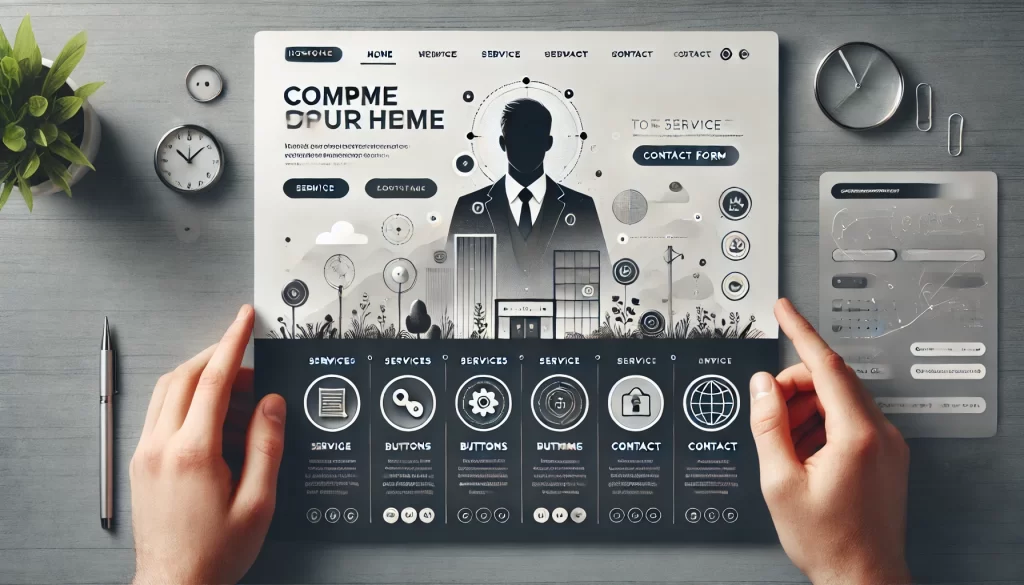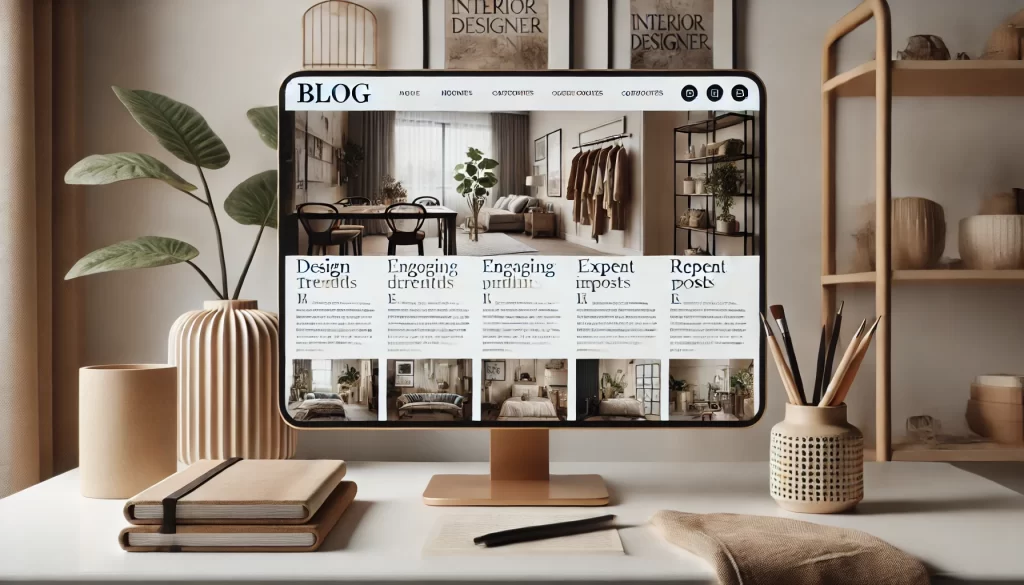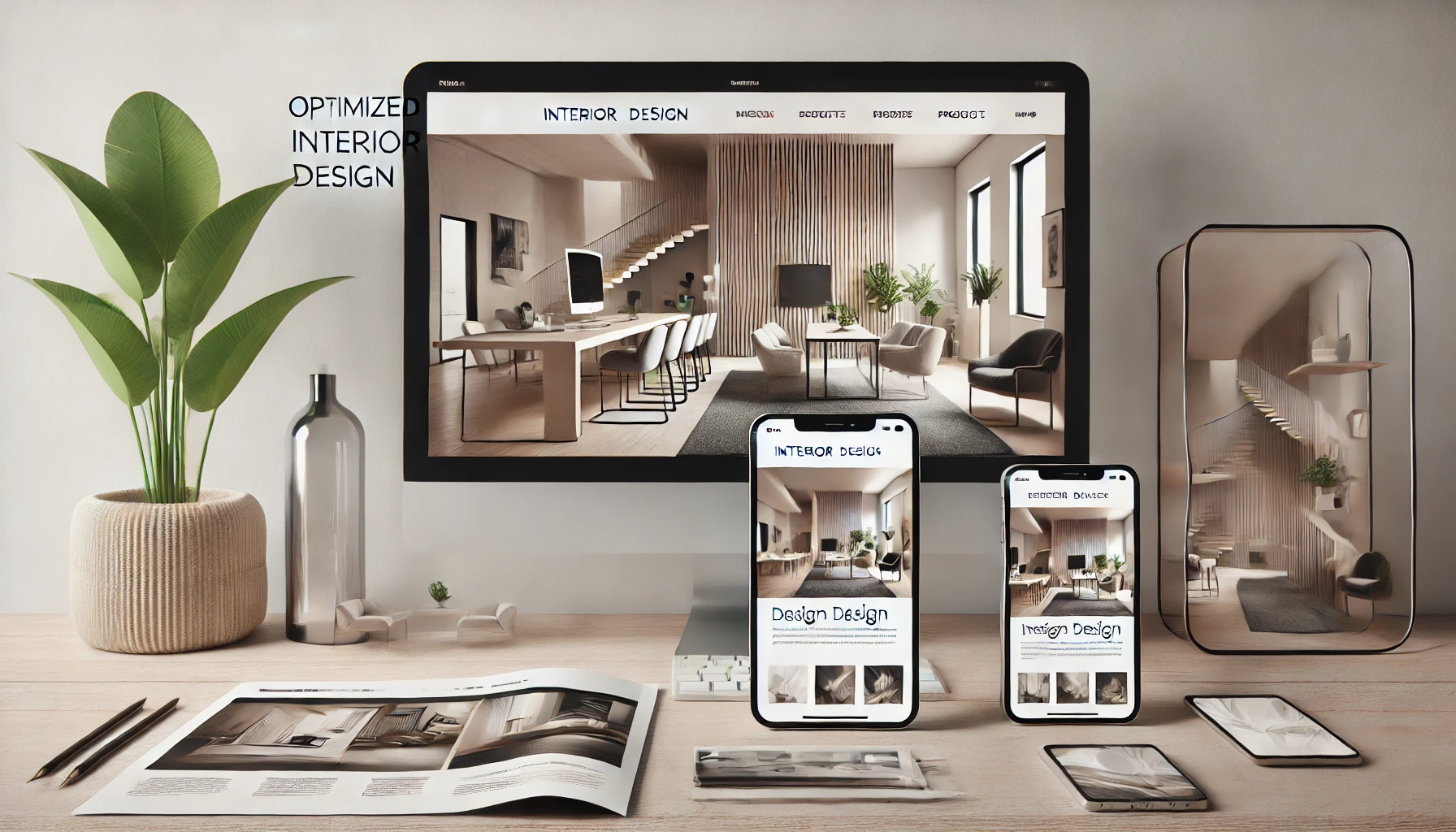The Role of Web Design in Supporting Interior Design Business Goals
In today’s digital age, your website is more than just an online presence; it’s the cornerstone of your interior design business. Whether you’re a freelancer or part of a larger design firm, your website should serve as a tool for branding, client acquisition, and portfolio presentation. The right web design can showcase your talent, attract potential clients, and help you achieve your business goals. We’ll explore best practices for creating a website that aligns with and supports your interior design business objectives. From enhancing your brand image to optimizing the user experience and leveraging SEO, we’ll cover everything you need to know to make your website an effective marketing tool.
Why Your Website is Crucial for Your Interior Design Business
Your website is often the first touchpoint potential clients will have with your business. It can either attract them or drive them away, depending on how well it reflects your brand and meets their needs. Here’s why a well-designed website is essential:
Supporting Branding and Business Identity
Your website is the digital representation of your brand. It’s where potential clients will learn about your style, expertise, and the services you offer. Consistent branding elements such as your logo, color scheme, and typography help to communicate your design philosophy and ensure that your website aligns with the rest of your marketing materials.
Attracting and Engaging Clients
A user-friendly, visually appealing website keeps visitors engaged. It should be easy to navigate, and it should highlight your strengths as an interior designer. By showcasing your portfolio, offering design inspiration, and providing valuable content, your website becomes a platform that converts casual visitors into paying clients.
Optimizing for Search Engines
Your website can also serve as a powerful tool for attracting clients through organic search traffic. By implementing SEO best practices, such as optimizing content with relevant keywords and ensuring fast load times, your website can rank higher on search engines like Google. This will increase your visibility and help potential clients find you when they search for interior design services.

Best Practices for Interior Design Website Functionality
A successful interior design website is not just about how it looks, it’s about how it functions. Here are the key elements of functionality that every interior design website should include:
Easy Navigation and User Experience (UX)
Navigation is the cornerstone of any well-designed website. For interior designers, your website should have clear and concise navigation that allows visitors to quickly find what they’re looking for whether it’s your portfolio, design services, or contact information.
Ensure that key pages such as the homepage, about us, services, and portfolio are easily accessible from the main menu. It’s also important to make sure the website is mobile-friendly, as many users will access it from smartphones and tablets.
Fast Load Times
Website performance is key to keeping potential clients engaged. A slow-loading website can cause frustration and lead visitors to leave your site before they even see your work. Ensure that your website is optimized for speed by using compressed images, reducing the number of heavy elements, and selecting a reliable web hosting provider.
Suggested Posts:
- Best Practices for Website Interior Design Business Goals
- Choosing the Best Interior Designer for Business Space
- Designing Interior Spaces for Tattoo Shops and Clinics
Clear Calls-to-Action (CTAs)
Every page on your website should have a clear call to action that encourages visitors to take the next step. Whether it’s scheduling a consultation, getting in touch, or viewing your portfolio, CTAs guide visitors toward becoming clients. Make sure that your CTAs stand out visually and are placed in strategic locations on each page.
Creating an Interior Design Portfolio That Sells
A portfolio is the heart of your interior design website. It’s where potential clients will evaluate your skills and decide whether to work with you. Here are some best practices for creating a compelling portfolio:
Showcase Your Best Work
Your portfolio should highlight your best and most diverse projects. Include high-quality images of your work, along with brief descriptions explaining the challenges, design concepts, and solutions for each project.
Make sure to showcase a range of projects to demonstrate your versatility—residential, commercial, office spaces, and any specialty design work. Providing a well-rounded portfolio can appeal to a broader audience and attract a variety of clients.
Organize Your Portfolio for Easy Navigation
For ease of use, organize your portfolio into categories based on design styles, room types, or project types. This allows visitors to quickly find the type of work they are most interested in. If you specialize in specific areas like eco-friendly design or luxury interiors, make sure to feature these types of projects prominently.
Incorporate Client Testimonials
Client testimonials build trust and credibility. Include positive feedback from past clients in your portfolio to showcase not only your skills but also your professionalism and reliability. Testimonials can be included on individual project pages or in a dedicated section on your website.
Suggested Posts:
- How to Build a Strong Portfolio to Attract Clients
- Creating an Effective Interior Design Website
- Design Home Interior for Style and Functionality

Integrating SEO Strategies to Drive Traffic
Search engine optimization (SEO) is crucial for increasing the visibility of your website and attracting potential clients. A well-optimized website will rank higher on search engines, making it easier for clients to find you. Below are key SEO strategies for interior designers:
Optimizing for Local Search
Most of your potential clients will likely be searching for interior design services within a specific location. For example, someone looking for the “best interior designer in Chicago” should be able to find your website. Make sure to include location-based keywords throughout your site and set up a Google My Business profile to improve your local SEO.
Keyword-Rich Content
Incorporating keywords relevant to interior design throughout your website’s content is key to improving search engine rankings. Use keywords like “web design for interior designers” and “interior design portfolio websites” in your page titles, meta descriptions, headers, and throughout your content.
Optimizing Image SEO
Images are an essential part of your portfolio, but they can also affect your website’s SEO if not properly optimized. Use descriptive image filenames and alt text to help search engines understand what your images represent. Properly optimized images can drive additional traffic via image search results.
Content Optimization for Interior Design Websites
Creating high-quality content is an excellent way to keep your visitors engaged and attract more clients. Content also plays a role in SEO, so it’s important to make sure your content is optimized for both users and search engines.
Blogging and Design Insights
A blog is a great way to engage visitors and establish your authority in the interior design field. Use your blog to share design tips, industry news, case studies, and insights on design trends. Regularly posting fresh content helps keep your website relevant and gives visitors a reason to return.
Showcase Design Process and Case Studies
Potential clients want to know how you work. Sharing case studies and outlining your design process on your website shows your thoughtfulness, attention to detail, and problem-solving skills. This builds trust and helps clients visualize what it will be like to work with you.
Key Takeaways
- A well-designed website plays a crucial role in attracting clients and supporting your interior design business goals.
- Focus on functionality, user experience, and fast load times to create a seamless, engaging website.
- Your portfolio is the centerpiece of your website and should showcase your best work in an organized, accessible format.
- Implement SEO strategies, including location-based keywords and optimized content, to increase your website’s visibility and drive traffic.
- Regularly updating your website with blog posts and case studies will help keep your site fresh and relevant.
FAQs
What makes an interior design website effective?
An effective interior design website is easy to navigate, visually appealing, and optimized for both SEO and user experience. It should showcase your portfolio, services, and client testimonials.
How can SEO help my interior design website?
SEO helps your website rank higher on search engines, making it easier for potential clients to find you. By using the right keywords, optimizing images, and focusing on local search, you can improve your website’s visibility and attract more clients.
What should be included in an interior designer’s portfolio on their website?
An interior designer’s portfolio should include high-quality images of past projects, brief descriptions, client testimonials, and an easy-to-navigate format. It’s important to showcase a variety of projects to demonstrate your versatility.
